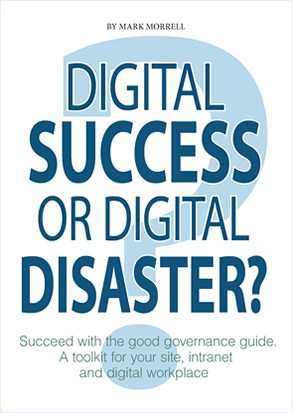It is not enough to set up a governance framework to underpin your strategy. They are prerequisites for a well-managed intranet. You also need to measure and demonstrate the benefits the intranet provides for your organisation, especially if your strategy needs further investment in the intranet or its governance. Implementing technologies, e.g. SharePoint, doesn’t come without a price tag.
Traditional Return On Investment (ROI) financial benefits usually have the biggest impact on your organisation, especially on those approving financial spend. However, there are other types of benefits with significant value. You need to consider all of the following to justify the benefits of good governance:
- Financial benefits that impact on the bottom line of your organisation’s financial results
- Quantified, non-financial benefits, such as improved productivity
- Unquantified, non-financial benefits such as culture changes
Some benefits are easier to measure. Other benefits have greater prominence with your stakeholders. The amount of benefit measured may also vary. Sometimes you may find the amount is so large, the benefits can be difficult to justify as achieved. You will need to judge the best benefits to justify investment in the intranet.
An example would be a change in people’s behaviour that increases productivity with time saved. This may appear to deliver a large amount of benefits. However, showing what people do with that time saved can be harder. Are they working better or on other work tasks, or are they relaxing and having more time to talk with colleagues? It can be demanding finding a suitable benefit.
You can choose how to measure the benefits your intranet provides. You can also decide when is a good time to measure the benefits e.g. interviewing people before and after a major change to assess its impact on their work activities. There are different approaches to take when you measure these benefits. Examples could be online polls, in-depth interviews, audit, etc. You need to consider how much time you have to measure the benefits, what resources you can call upon, and whether you need external expertise.
There are also benefits that come under the category of cost avoidance. Publishing standards for security or accessibility help to change people’s behaviour. That reduces the risk of unnecessary costs from their previous behaviour.
When you are communicating the benefits, I help clients to provide examples that senior stakeholders will easily recognise. It helps to get their attention and support when you demonstrate how the intranet benefits your organisation. It will depend on the benefit you are measuring to decide on the best approach. Nevertheless, whatever approach you choose, talk their language, explain your methods, and show easy to understand examples and comparisons. Your stakeholders will accept the benefits more quickly.
 Find out more detailed information and publishing standards best-practice examples in ‘Digital success or digital disaster?‘. Try the introductory chapter for free.
Find out more detailed information and publishing standards best-practice examples in ‘Digital success or digital disaster?‘. Try the introductory chapter for free.

